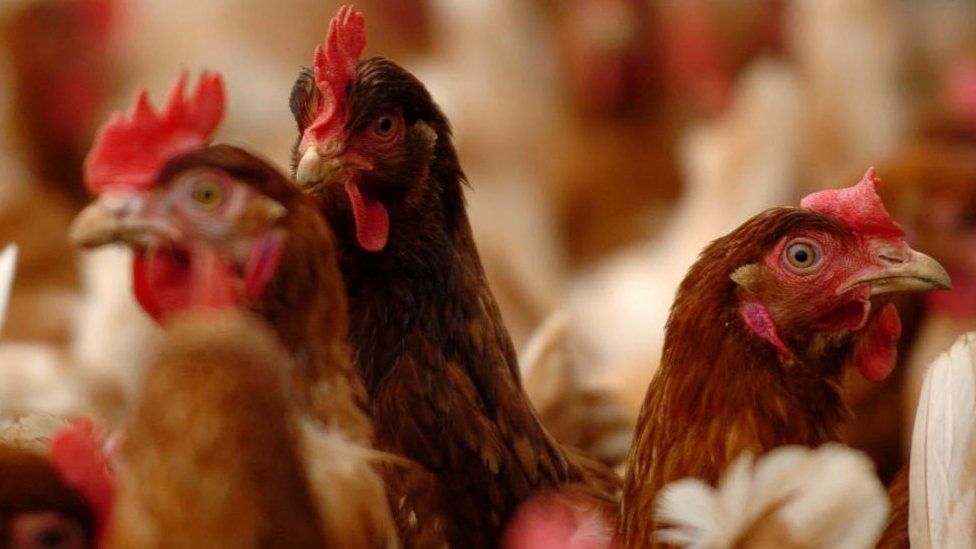ARTICLE AD BOX
 Image source, PA Media
Image source, PA Media
All poultry in Norfolk, Suffolk and parts of Essex must be kept indoors from Wednesday, as part of a ramping-up of measures to prevent avian flu spreading, the government has said.
There have been 161 cases in captive birds detected in the past year - the UK's largest ever outbreak.
The previous record was 26 cases detected in 2020/21.
Around 48m birds have been culled in the UK and the EU this year, amid the spread of highly pathogenic avian influenza.
The government has said the 3.2m birds culled in the UK were a "small proportion" of total production - about 20m birds a week.
More than 1,700 cases have also been recorded in the UK's wild bird population, in 406 locations involving 59 species.
In previous years, the virus has mostly died out during the summer months but this outbreak has persisted all year round, and spread more easily.
Image source, Defra
Image caption,The eastern part of the prevention zone covers all of Norfolk and Suffolk and nine of the more easterly districts in Essex
The prevention that was declared by the Department for Environment, Food and Rural Affairs (Defra) on 28 September also covered Devon, Cornwall and parts of Somerset - but these areas have not yet been told to keep birds indoors.
Instead, all poultry gatherings - such as fairs or markets are banned - and bird keepers are told to cleanse and disinfect clothing and equipment before and after contact with birds.
The latest bird flu figures covering both Europe and the UK, which track outbreaks from October 2021 to 9 September, were published on Monday. They showed that there have been 3,573 findings in wild birds, with the virus affecting 37 countries, spreading from Svalbard to south Portugal and eastward to Ukraine. But it warned that figure could be an underestimate.
While there have been no recorded cases of human transmission in the EU, there was one case in south-west England in January.

 2 years ago
40
2 years ago
40








 English (US) ·
English (US) ·